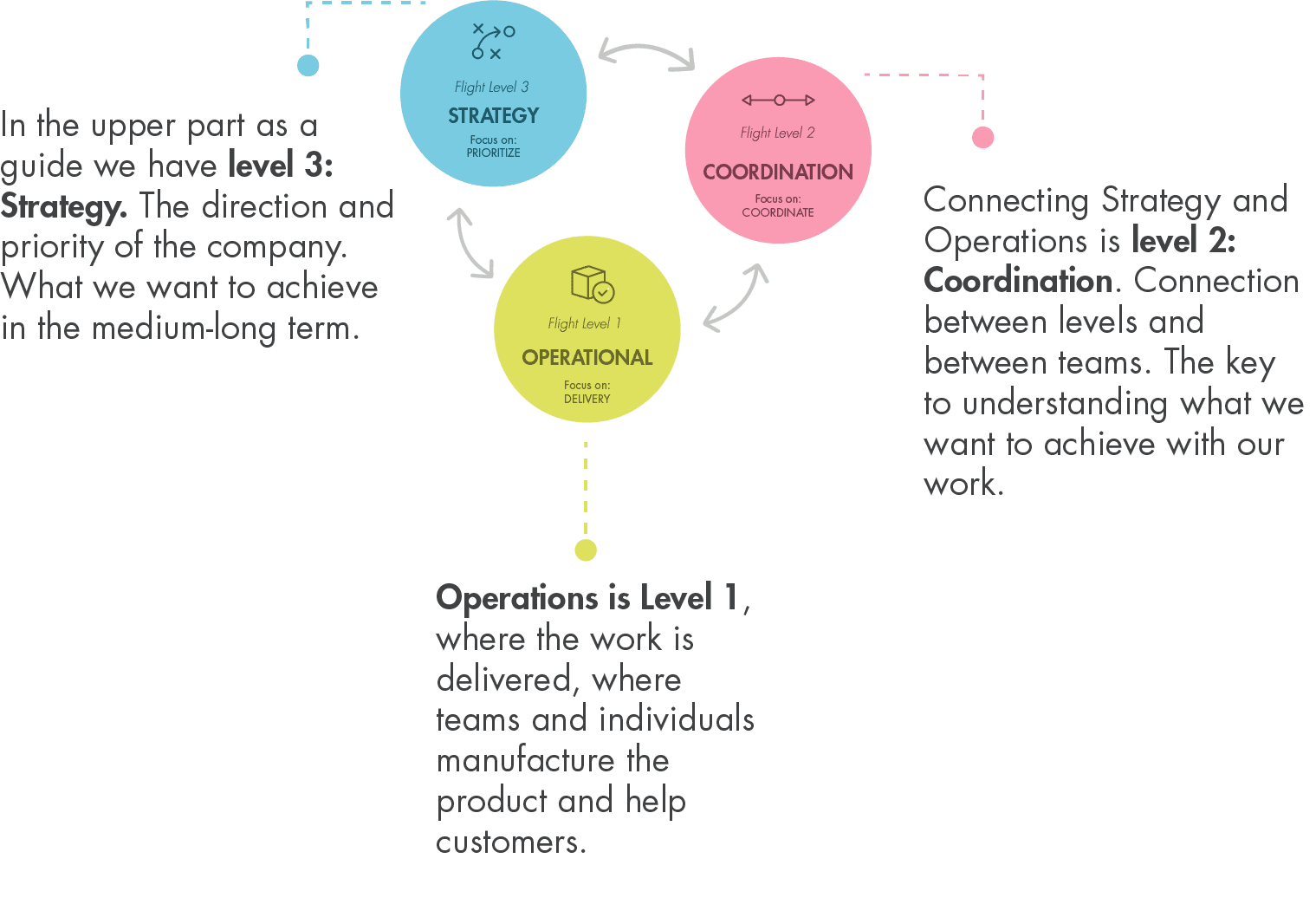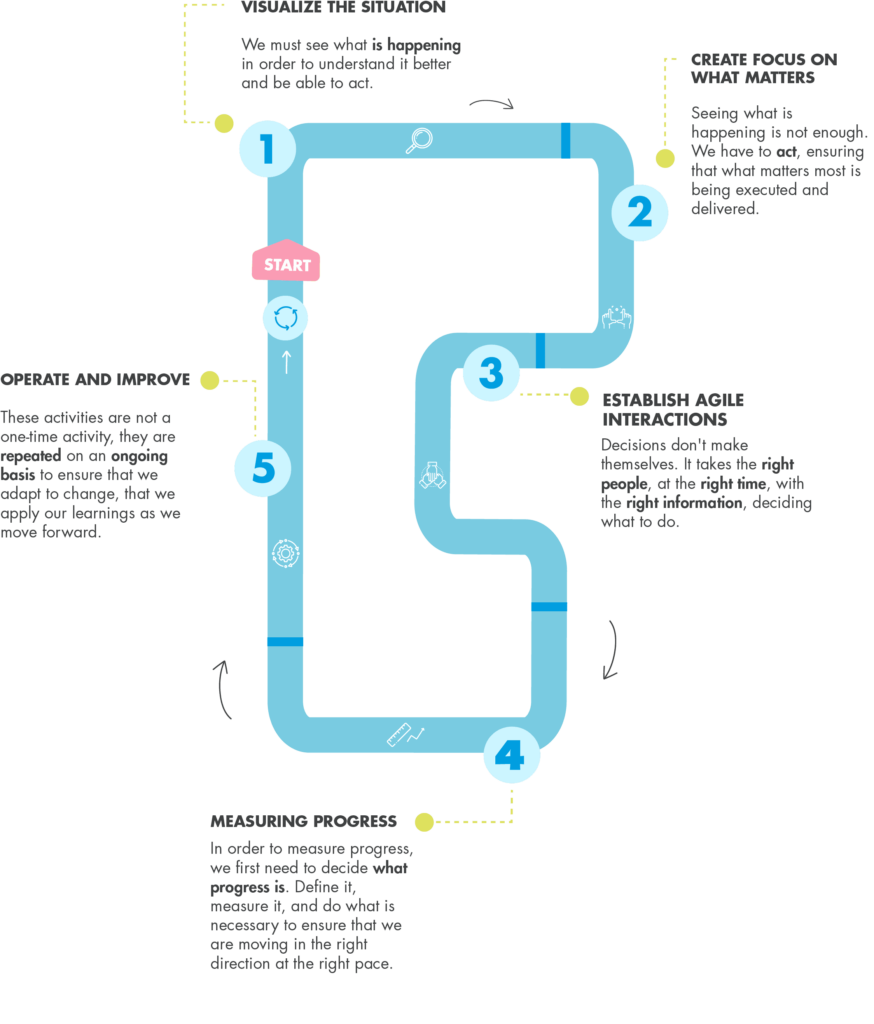Agile Coaching, from leading by believing to leading by trusting-EN
cristina_miaja
- Agile Coaching
- Article
Pursuing business agility
For more than a decade, agile transformations have been a concern not only for the technology area, but for the entire business. Some scaling frameworks have helped many organizations to have a set of techniques, roles, events, patterns and best practices to adopt. However, these frameworks have become a double-edged sword that has turned against those who have applied them blindly, without reflecting on whether they were really adding value.
On many occasions, agile transformation itself was the goal rather than the vehicle. Therefore, it was urged to drive some more visible aspects: more agile teams, more Product Owners, more Story Points. But the value really brought by the transformation was being put on the back burner. In this sense, experience has taught us that business agility goes far beyond having agile teams.
Flight Levels, a new approach
In this context, the Flight Levels approach was born. A new paradigm that helps to go back to basics, to consolidate before accelerating and to reflect as we move forward. A way to help detect where in the organization it is necessary to act in order to achieve the desired results.
Flight Levels is not a framework, but rather a framework of thinking. A way of understanding our organization at different levels, distinguishing between Strategy, Operations and Coordination. And at the same time, to ensure that a series of activities are carried out at each of them.
To exemplify the concept of Flight Levels, let’s use a metaphor with airplanes. Piloting an airplane requires, in addition to a lot of skill and knowledge, having the right information to make timely decisions to ensure that we are heading safely to the desired location. For example, we need to know at all times how high above the ground we are. When we are landing, a couple of feet up or down can be the difference between a soft landing or a fatal hit against the runway. But when we are at 5,000 feet, this couple of meters difference is totally irrelevant. In other words, we need to manage the right information at every level of flight.

If we extrapolate the different levels within an organization, we can understand them as interrelated objectives. First, at the top we have Flight Level 3: Strategy. The direction and priority of the company or what is the same: what we want to achieve in the medium to long term. Secondly, Flight Level 2: Coordination. The connection between Strategy and Operations. At this level is the key to understanding what we want to achieve through the fruits of our labor. And thirdly, Flight Level 1: Operations, composed of teams and individuals, where the work is delivered, the product is manufactured and customers are supported.
The 5 activities at Flight Levels
Once the levels have been identified, five different activities should be applied at each level, thus taking into account the entire organization, not just the teams or operations.
First, visualize the situation. You need to see what is happening, and to do this you need to ask yourself what work is going on, what results are being achieved or where processes are running aground. Secondly, create focus on what is important. That is, seeing what is happening is not enough, so you have to act, ensuring that what is most important is being executed and delivered. Limiting work in progress, prioritizing, stopping or uncaging are ways to create focus on what is important.

Third, establish agile interactions. Decisions are not made on their own. The right people, at the right time, with the right information, need to decide what to do or what not to do. Fourth, measure progress. In order to measure progress, you must first decide what progress is. Maybe it’s projects or epics, maybe deliverables, maybe OKRs or KPIs, or just percentage of activities completed. For each level progress will be a different thing. You must define, measure and do what is necessary to ensure that you are moving in the right direction at the right pace.
The last activity is operating and improving. The above four activities are not carried out once, they are repeated on an ongoing basis to ensure that the organization adapts to change and that learnings are applied as progress is made.
Where to start?
Where to start applying Flight Levels? There is no specific order, we will start at the level that hurts us the most! The simplicity of the model and the interrelation between its levels allow us to advance from different fronts, either sequentially or in parallel, looking for improvements wherever they are needed.

If we believe that our organization needs to ground its strategy to ensure its follow-up and execution, starting with a Flight Level 3 system can help us to break down long-term goals into concrete activities and measurable objectives.

If we feel that we lack speed of delivery, that the work sometimes gets stuck between departments, or we have the feeling of not being able to cope, we can implement a coordination system based on Flight Level 2 that will help us improve collaboration between teams and departments, visualizing the workflow from start to finish and prioritizing the delivery of value.

If, in addition, we want our teams to be more productive, to apply continuous improvement practices, to measure the progress of their work and to focus on what is most important, we can create Flight Level 1 systems for each team or initiative that will contribute to greater agility that we can scale to the rest of the organization.
Regardless of the state of our transformation, or the frameworks we are using, we can improve the business agility of an organization through the Flight Levels approach. Applying the five activities at the different levels and creating interrelationship systems between them will help us to detect where in the organization we need to act to achieve the desired results.